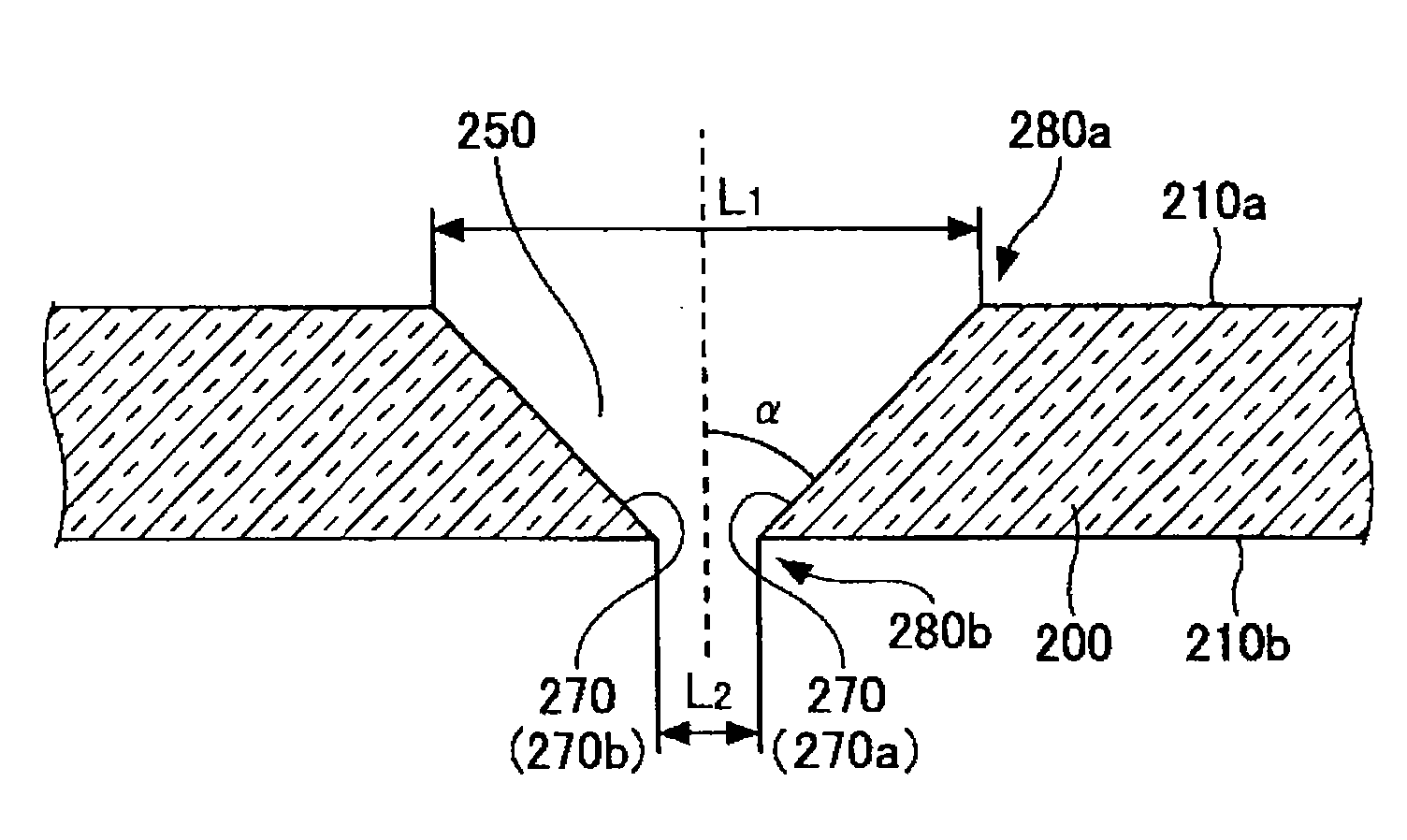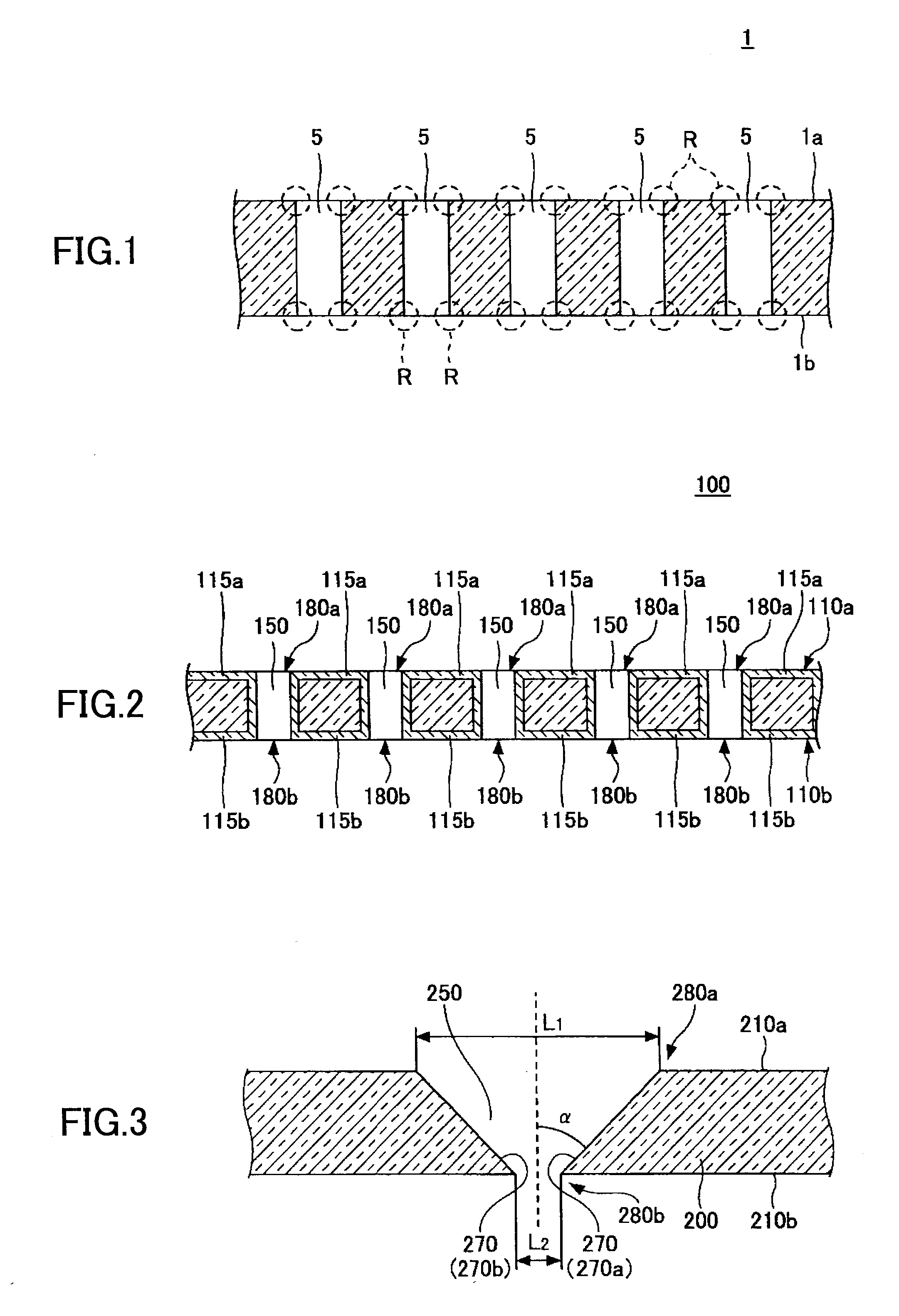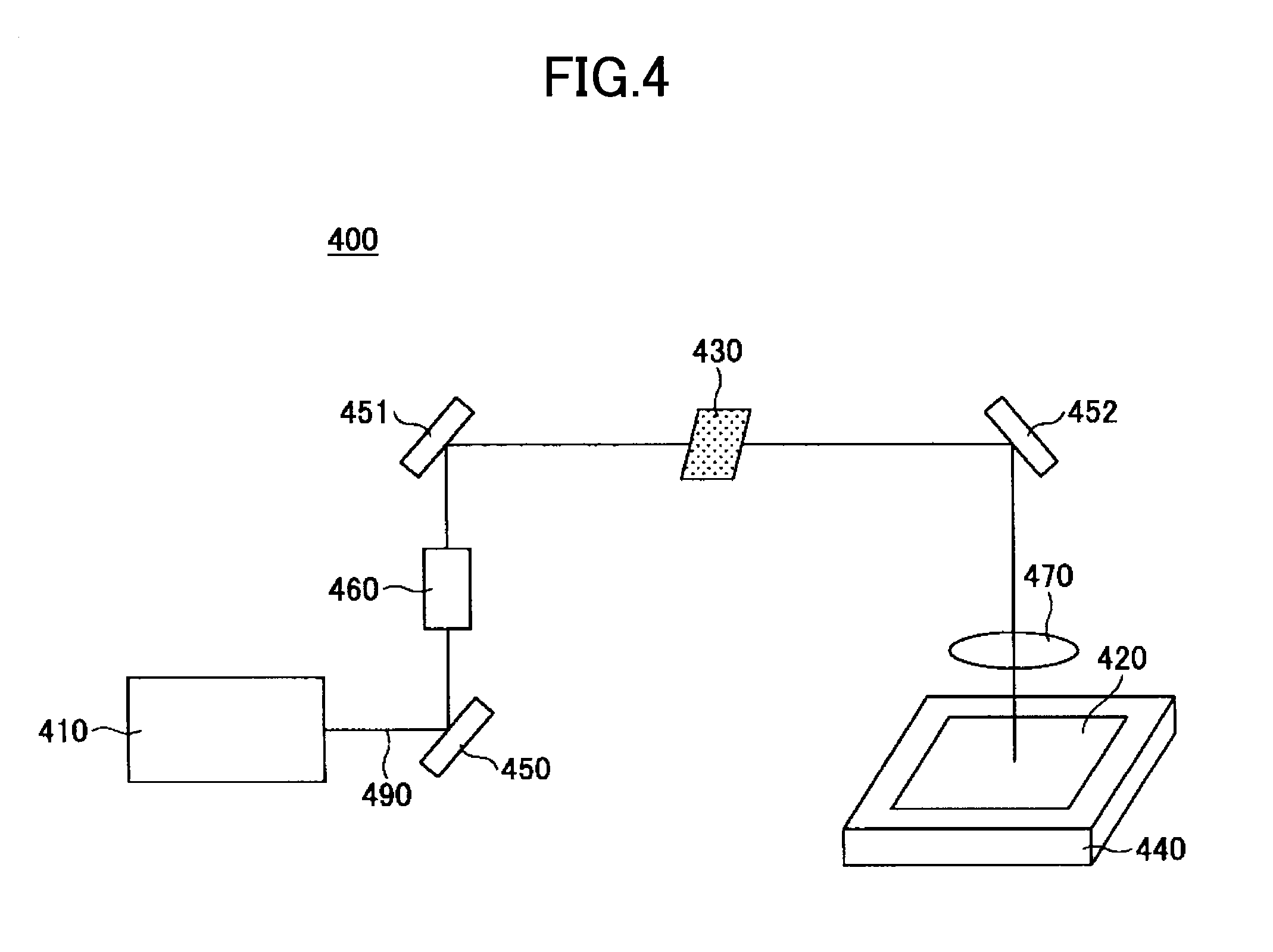Glass substrate for forming through-substrate via of semiconductor device
a glass substrate and semiconductor technology, applied in semiconductor devices, thin material processing, basic electric elements, etc., can solve the problems of wire-bonding technology not being able to cope with the narrow pitch, glass substrate may break relatively easily, break or crack may easily occur, etc., to achieve satisfactory strength
- Summary
- Abstract
- Description
- Claims
- Application Information
AI Technical Summary
Benefits of technology
Problems solved by technology
Method used
Image
Examples
example 1
[0108]The glass substrate having the plurality of penetration holes is manufactured according to the following procedures, using the manufacturing apparatus illustrated in FIG. 4.
[0109](Manufacturing Glass Substrate)
[0110]First, a plate-shaped glass is formed according to the following procedures.
[0111]Each raw material powder is weighed and mixed in order to obtain 1 kg of a mixed powder that includes 72.8 wt % of SiO2, 1.9 wt % of Al2O3, 3.7 wt % of MgO, 8.1 wt % of CaO, 13.1 wt % of Na2O, and 0.3 wt % of K2O. In addition, sodium sulfate is added to become 0.4 wt % in SO3—equivalent content. Next, the mixed powder is put into a platinum crucible and maintained at 1600° C. for 3 hours, in order to melt the mixed powder. The melted material is subjected to a degassing process and homogenized, before flowing the melted material into a mold. Thereafter the mold is slowly cooled, in order to obtain a glass sample.
[0112]The glass sample that is obtained is cut and polished into a size h...
example 2
[0135]A glass substrate having a large number of penetration holes is formed by a method similar to that for the Example 1, and the chemical strengthening process is performed on the glass substrate.
[0136]However, in an Example 2, the composition of the plate-shaped glass is 60.9 wt % of SiO2, 9.6 wt % of Al2O3, 7.0 wt % of MgO, 11.7 wt % of Na2O, 5.9 wt % of K2O, and 4.8 wt % of ZrO2. No Cao is added. Other manufacturing conditions of the plate-shaped glass are similar to those of the Example 1.
[0137]The Table 1 illustrates the composition and various characteristics of the glass substrate in a row of the “Example 2”. The density is 2.52 g / cm3 and the Young's modulus is approximately 78 GPa for the glass substrate that is obtained. In addition, the average coefficient of thermal expansion of the glass substrate is 91×10−7 / K at 50° C. to 350° C. Further, the glass transition temperature is 620° C., and the strain point is 578° C.
[0138]Moreover, the conditions of the laser beam machi...
example 3
[0142]A glass substrate having a large number of penetration holes is formed by a method similar to that for the Example 1, and the chemical strengthening process is performed on the glass substrate.
[0143]However, in an Example 3, the composition of the plate-shaped glass is 62.2 wt % of SiO2, 17.2 wt % of Al2O3, 3.9 wt % of MgO, 0.6 wt % of CaO, 12.8 wt % of Na2O, and 3.5 wt % of K2O. No ZrO2 is added. Other manufacturing conditions of the plate-shaped glass are similar to those of the Example 1.
[0144]The Table 1 illustrates the composition and various characteristics of the glass substrate in a row of the “Example 3”. The density is 2.46 g / cm3 and the Young's modulus is approximately 73 GPa for the glass substrate that is obtained. In addition, the average coefficient of thermal expansion of the glass substrate is 93×10−7 / K at 50° C. to 350° C. Further, the glass transition temperature is 595° C., and the strain point is
[0145]553° C.
[0146]Moreover, the conditions of the laser beam...
PUM
| Property | Measurement | Unit |
|---|---|---|
| thickness | aaaaa | aaaaa |
| thickness | aaaaa | aaaaa |
| surface compressive stress | aaaaa | aaaaa |
Abstract
Description
Claims
Application Information
 Login to View More
Login to View More - R&D
- Intellectual Property
- Life Sciences
- Materials
- Tech Scout
- Unparalleled Data Quality
- Higher Quality Content
- 60% Fewer Hallucinations
Browse by: Latest US Patents, China's latest patents, Technical Efficacy Thesaurus, Application Domain, Technology Topic, Popular Technical Reports.
© 2025 PatSnap. All rights reserved.Legal|Privacy policy|Modern Slavery Act Transparency Statement|Sitemap|About US| Contact US: help@patsnap.com



